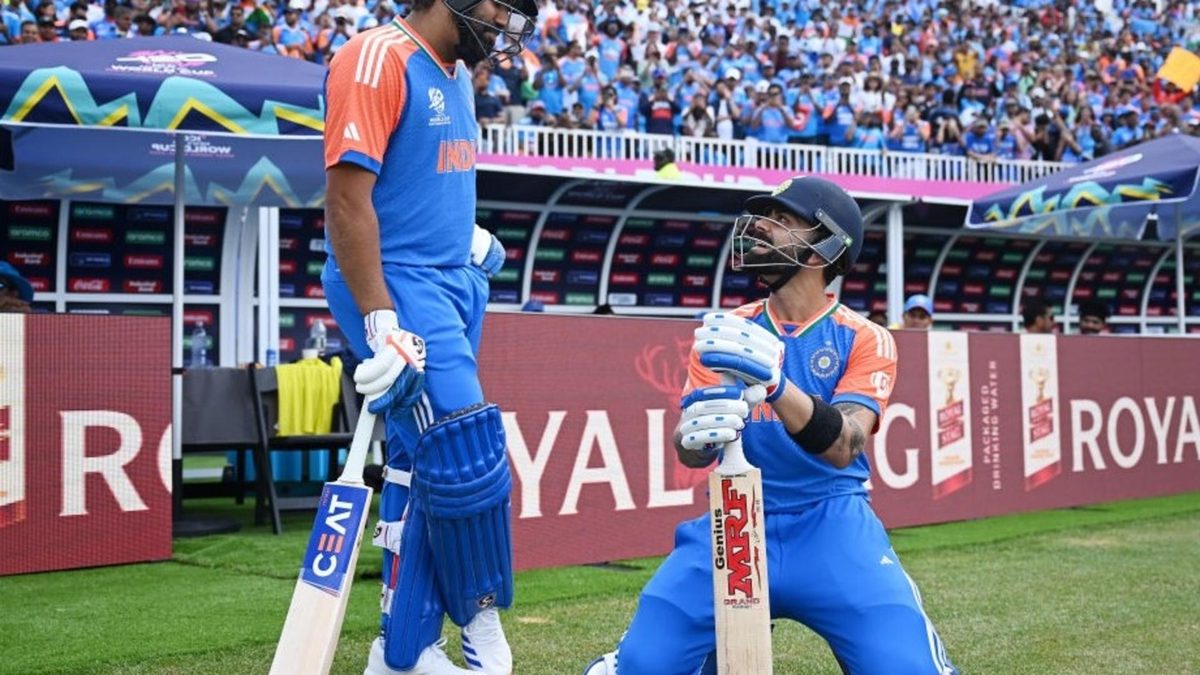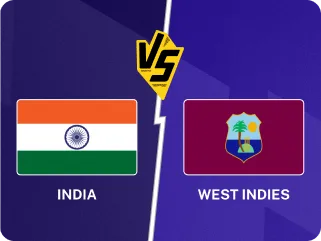
Naman Agarwal argues that India should consider playing an extra batter against Pakistan in the extreme bowling friendly conditions of New York.
The Nassau County Stadium in New York has already built a notorious reputation despite being just a week old in international cricket. Built specifically for the T20 World Cup, the games so far at the venue haven't gone the way ICC would have expected them to.
Sri Lanka were skittled out for 77 against South Africa in the first World Cup game here. While that capitulation might be partly attributed to the skill difference between both teams, the second innings of that game and the six innings that have since been played at the venue have proved that Sri Lanka were not solely responsible.
South Africa took more than 16 overs to chase that target down. Ireland were bowled out for 96 against India, before failing to chase 138 against Canada a couple of days later. And the Netherlands nearly pulled off a hat-trick of heists against South Africa at World Cups when they threatened to defend 103. That's right. 103.
Clearly, New York has proved to be not just another venue for T20 cricket. It's only fair then that India, who have the most anticipated clash of the World Cup coming up against Pakistanat the venue in less than a day's time, adapt accordingly.
The dominance of pace
At the Nassau County International Stadium, 40 of the 49 wickets that have fallen in the four games played so far, have been taken by seamers. The quicks have averaged 16.07 runs per wicket with a wicket every 17.3 balls. The most eye-catching number, however, is their economy. They have conceded only 5.57 runs per over.
What makes these numbers especially meaningful in the context of the New York surfaces is that they have come across four games featuring bowling attacks of varied skill sets and calibre, and not just through one team outclassing another across a series of games.
Why India need an extra batter to counter the Pakistan pace attack
The India-Pakistan game is expected to be played on the same surface as the one on which the South Africa-Netherlands match was played. While the bounce here wasn't as uneven as it was during India's first match against Ireland, run-scoring was still extremely tough, with seamers finding seam, swing, and extra carry for a major part of the game.
In Shaheen Shah Afridi, Mohammad Amir, Haris Rauf, and Naseem Shah, Pakistan have the ideal set of fast bowlers with the ideal range of skillsets to exploit the conditions to their advantage.
USA stun Pakistan and defeat them in the super over at Grand Prairie Stadium, Dallas👏
— Wisden (@WisdenCricket) June 6, 2024
Read more: https://t.co/78KVsNSYlL#PAKvsUSA #T20WorldCup #Cricket pic.twitter.com/u9p0B7En1Z
Mindful of the importance of batting depth, India played both Ravindra Jadeja and Axar Patel in the previous game, leaving out Kuldeep Yadav and playing four seamers including Hardik Pandya.
However, there might just be scope for another batter in that XI for the Pakistan match.
Rohit Sharma confirmed at the pre-match press conference that apart from the openers, none of the other batting positions is fixed for India. That means Virat Kohli will partner Rohit against the new-ball pair of Shaheen and Amir. Both bowlers have peviously troubled the two senior India batters in ICC events with the new ball, in significantly less helpful conditions.
This year, Rohit averages 22.6 against left-arm seamers in the powerplay, having been dismissed five times by them across all T20s. A top-order collapse with the new ball doing all sorts of tricks wouldn't be far-fetched possibility.
Now while picking an extra batter at the expense of a bowler because you foresee a potential top-order collapse might be a defensive move, the conditions in New York elevate the stature of bowlers, fast bowlers in particular, to such an extent that the value in having bowling backups reduces.
With Hardik Pandya back to full fitness and bowling well, India have four quality quicks to exploit the New York conditions on offer. Should they need a backup, Shivam Dube can roll his arm over, like he did during the warm-up game against Bangaldesh. Either Jadeja or Axar can fill the fifth bowler's quota, with the other making way for the extra batter.
Who should be the extra batter?
Among the four players who sat out in the first game, Yashasvi Jaiswal and Sanju Samson were the two recognised batters. Rohit's commitment to the opening pair of Kohli and himself closes the door on Jaiswal's chances, leaving Samson as the only choice.
While he has excelled at No.3 for Rajasthan Royals and was sent out to open in the warm-up game, shuffling around the order is not new to him. In case of an early collapse, India can send Samson at No.4, protecting Suryakumar Yadav from the new ball. If they get off to a good start instead, Samson, Shivam Dube, and Pandya can be sent out based on entry points and matchups.
There's a decent chance that the extra batter might not be used at all, but it's a hedge against the extreme bowler friendly conditions that is worth taking in a big game.








